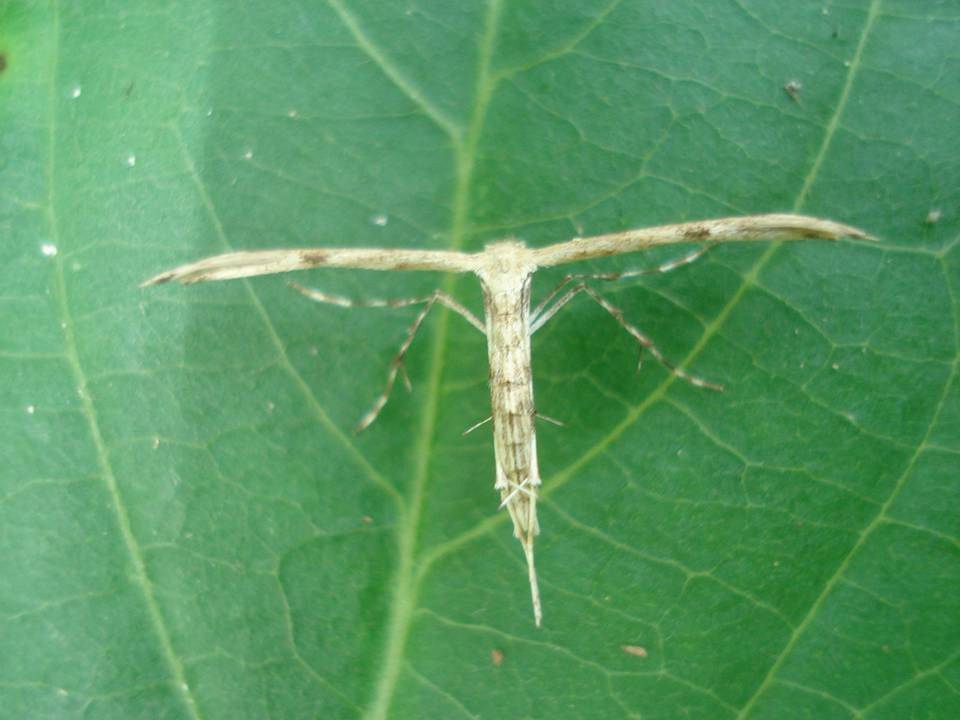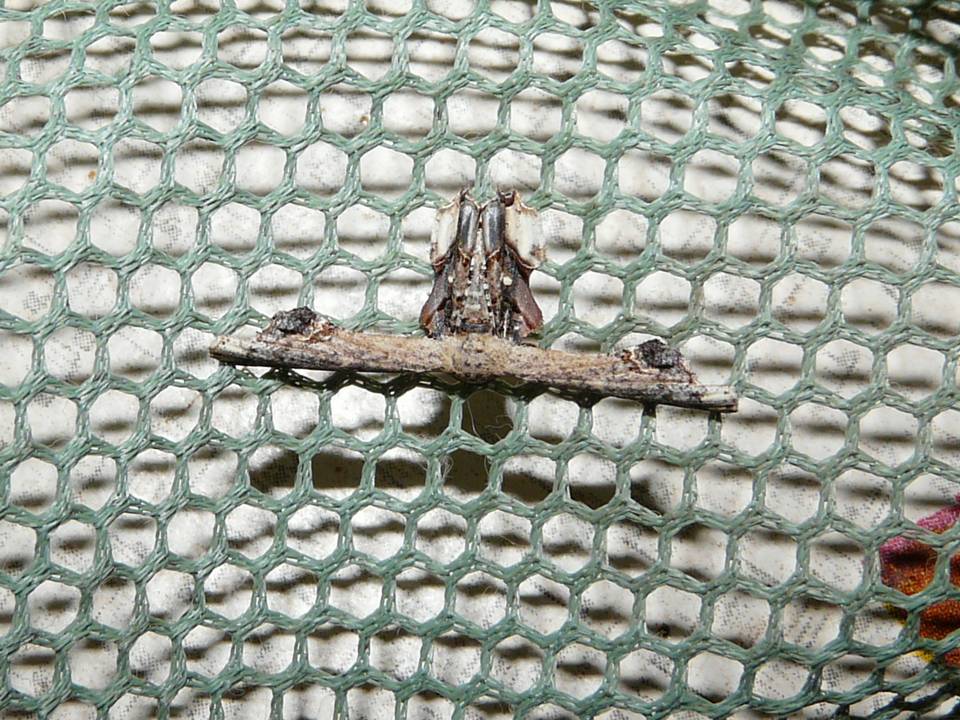

PTEROPHORIDAE - PLUME MOTHS
Distinctive small moths with well-developed clefts on the forewing and hindwings. The distinctive T-wing resting shape is formed by the forewings being outstretched at right angles to the body and the lobes of the hindwings being brought together and held under the forewing. They are distributed globally with about 500 species worldwide.
Characteristics
Head with smooth scales and external ocelli and chaetosemata absent. Maxillary palpi vestigial, proboscis present but unscaled at the base. Labial palpi slender and thick. Forewing cleft with 2 or 3 deep divisions, though occasionally complete. Veins M1 and M2 often reduced, M3 often stalked with CuA. CuP present or reduced. Hindwing venation shows vestigial or absent M1 and M2 and is much reduced in general. CuP and one branch of CuA are often absent. Wing thorax aculei absent and wings coupled with a frenulum-retinacular system. Species with undivided wings show less modified wing venation than those with cleft wings. Branches of Rs forewing vein may be all present or mostly absent. Epiphysis present and tibial spur formula 0-2-4. Legs and abdomen are long and slender. Male with strongly curved aedeagus. Female with narrow, non-attenuated ovipositor and anterior apophyses frequently absent. Tympanal organs lacking. (Scoble 1995).
Life Cycles
Eggs are oval and elongate. Larvae are cylindrical or slightly flattened with primary setae only on the head and primary and modified secondary setae on the body. Prolegs are long and slender with uniordinal crotchets arranged in mesoseries. L-group of prothorax is trisetose. Larvae are leaf feeders but may bore into plant material, such as stems, flowers and fruits. Some species are leaf miners in the early stages or live in folded leaves. Pupae are slender and with ventral hooked setae on the caudal segments. Setae are widely distributed and dorsal spines are frequently conspicuous. (Scoble 1995).
Classification
The Pterophoridae is the only family in the superfamily Pterophoroidea and is split into three subfamilies. This family has previously been included in the Pyraloidea and Alucitoidea, but separation as its own superfamily seems warranted.
Agdistinae - Wings not cleft. Veins M1 and M2 well-developed in both wings.
Platyptiliinae - Forewing bifid or rarely trifid, and hindwing trifid. Veins M1 and M2 short and weak in both wings. Second and third lobes of hindwing with two veins each.
Pterophorinae - Forewing bifid and hindwing trifid. Veins M1 and M2 short and weak in both wings. Second lobe of hindwing with two veins and third lobe with one vein.
Click on the images to enlarge them.
Superfamily Pterophoroidea: Family Pterophoridae
References:
Scoble MJ 1995 - The Lepidoptera: Form, Function and Diversity - Oxford University Press, Oxford.
Turner D, Stanêk VJ 1992 - The Illustrated Encyclopedia of Butterflies and Moths - Select Editions, London.
Designed by Paul Smith 2006. This website is copyrighted by law. Material contained herewith may not be used without the prior written permission of FAUNA Paraguay. Photographs on this page were taken by Paul Smith and Leila K and are used with their permission.
 | FIGURE 1 |
|
 | FIGURE 2 |
|
FIGURE 1 - Unidentified sp - PROCOSARA, PN San Rafael (Leila K August 2008 - ECOSARA Biodiversity Database).
FIGURE 2 - Unidentified sp - Encarnación, Departamento Itapúa (Paul Smith September 2008).

